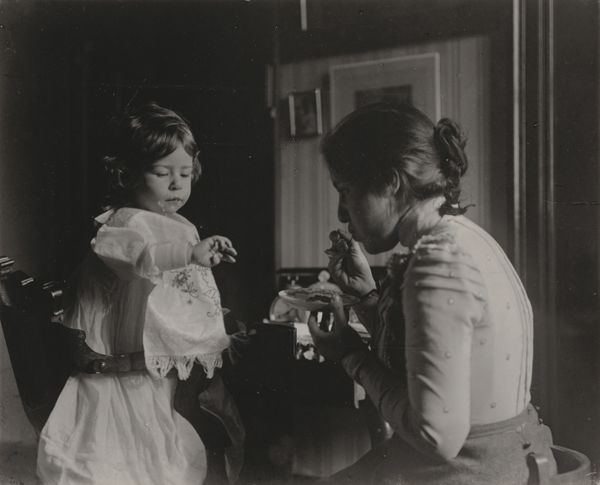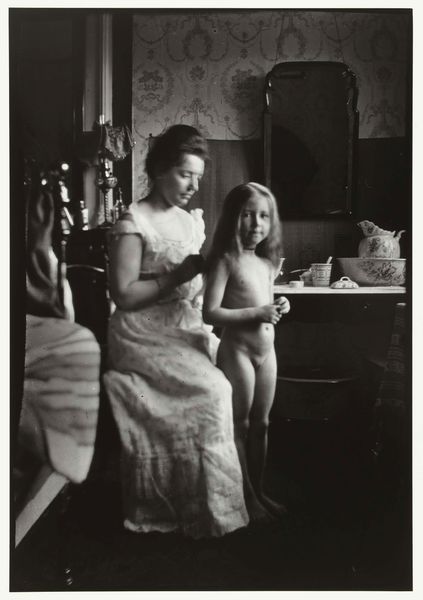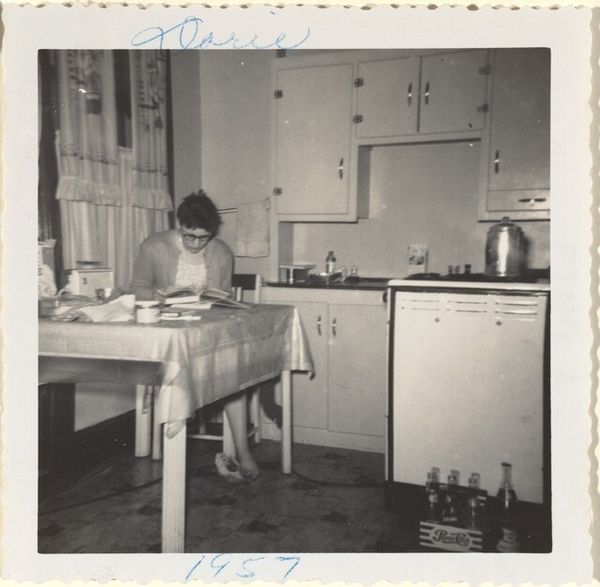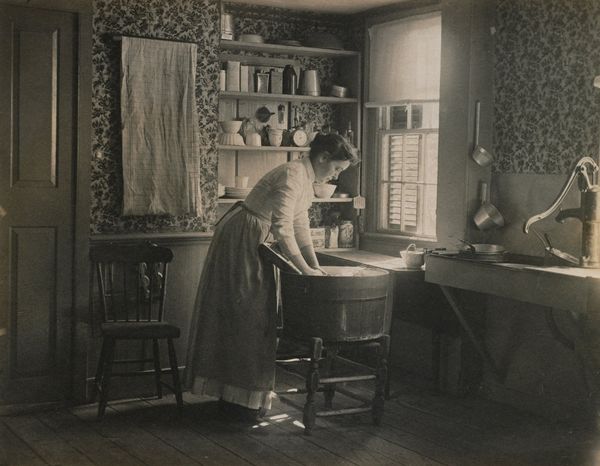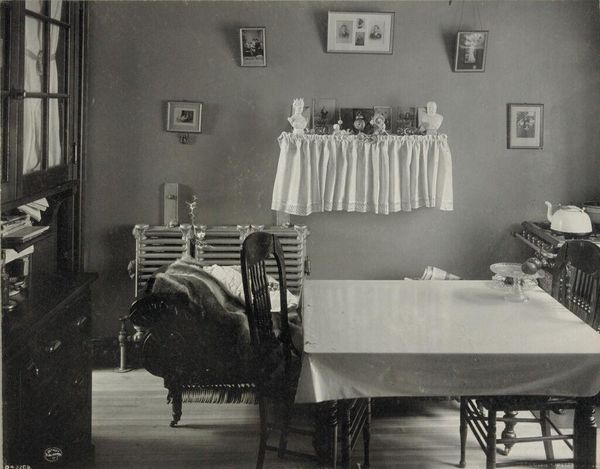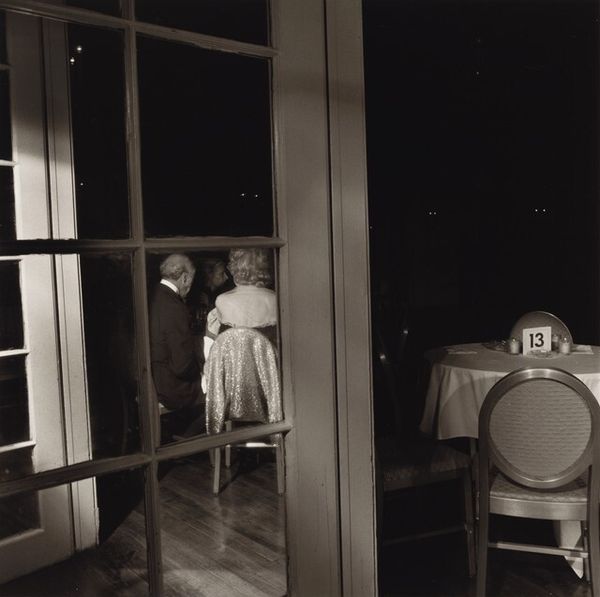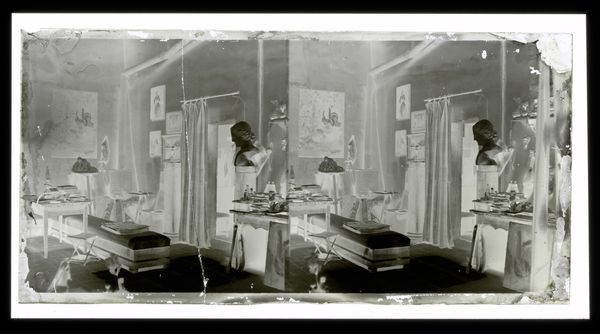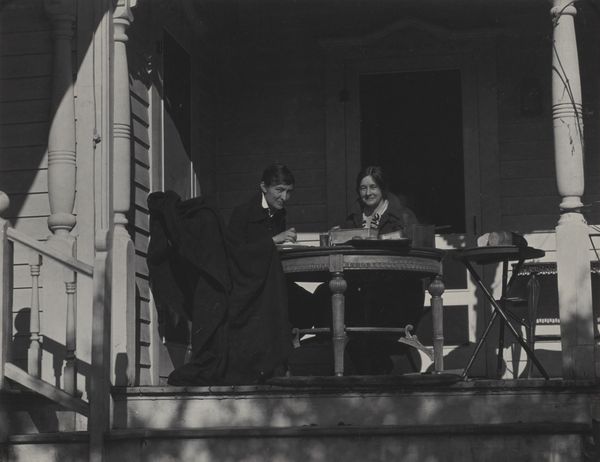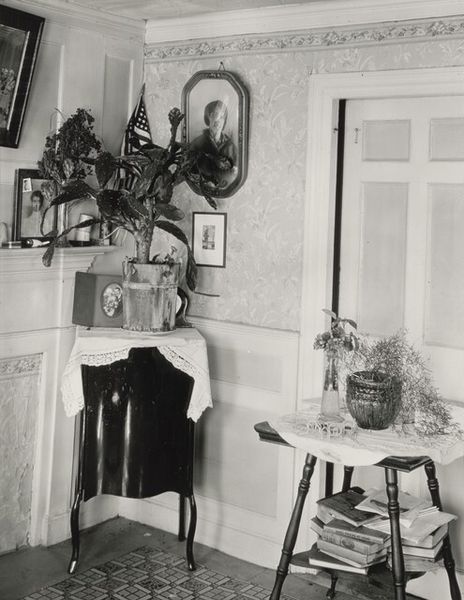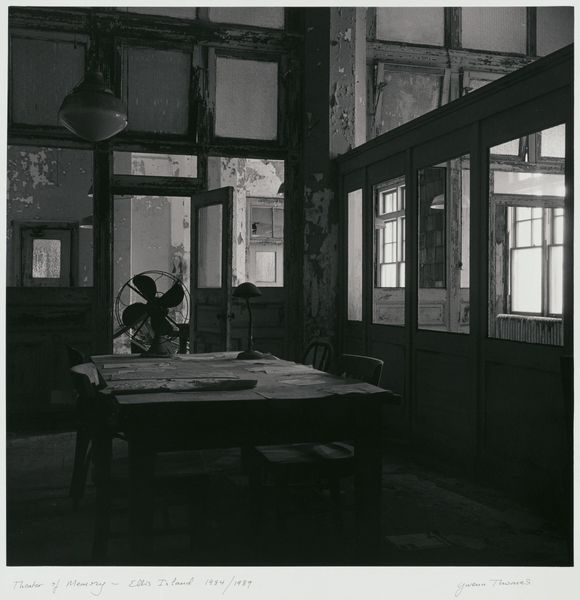
photography, gelatin-silver-print
#
portrait
#
black and white photography
#
harlem-renaissance
#
black and white format
#
warm monochrome
#
social-realism
#
archive photography
#
photography
#
historical photography
#
black and white theme
#
old-timey
#
black and white
#
gelatin-silver-print
#
monochrome photography
#
genre-painting
#
monochrome
#
realism
Dimensions: image: 24.6 x 19.5 cm (9 11/16 x 7 11/16 in.) sheet: 25.2 x 20.2 cm (9 15/16 x 7 15/16 in.)
Copyright: National Gallery of Art: CC0 1.0
Curator: Here we have Aaron Siskind’s “Harlem Home,” a gelatin silver print made between 1937 and 1939. It's a powerful image of a domestic scene. Editor: Whew, it’s heavy. You can almost smell the lunch, or…maybe it’s just my own longing for simpler times radiating out from that photo. Is it weird to say it smells like old radiator and sun-warmed dust bunnies? Curator: Not at all. It's the texture Siskind captures. Let’s think about this photograph within the context of the Harlem Renaissance. It goes beyond superficial representation. It makes an argument about family and place during a time of immense racial and economic struggle. Note the tension of laundry hanging over their heads while a young girl sits upon an empty milk jug, the table set with humble fare. Editor: Struggle is exactly it. The young girl's little boots and the mom's… exhaustion? Resignation? I’m not sure. It’s all packed in. This feels very lived-in. Curator: Precisely. There's a strong Social Realist vein running through this. Siskind challenges idealized portrayals. “Harlem Home” gives voice to everyday experiences, engaging viewers in a deeper social dialogue about inequality. And it raises complex gendered questions of domestic labor. Editor: Totally, and there's almost this dreamlike quality with the harsh realism. I mean, you look at the light, right? That window behind them–it almost feels like a stage. Or a confession booth, maybe? Both? Curator: A space for confession and social commentary, undoubtedly. We also must recall the Farm Security Administration photographs of the same period. Both Siskind and the FSA photographers recorded America with the same critical yet deeply humane eye. They both show the fortitude of Americans surviving hardships. Editor: Yeah. It’s haunting and tender at the same time. Almost makes me want to call my mom… or at least learn to make her meatloaf. Thanks, Siskind, for kicking me right in the gut! In a good way, obviously. Curator: It's a striking example of how documentary photography can be so much more than just a record. It can be a powerful catalyst for empathy and change.
Comments
No comments
Be the first to comment and join the conversation on the ultimate creative platform.
